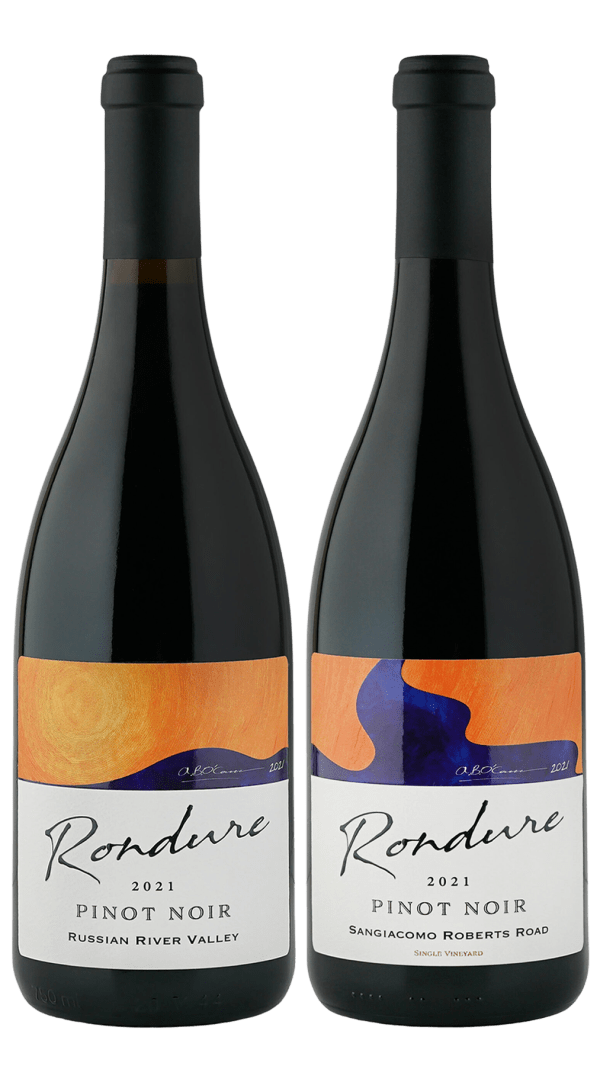Rondure Pinot Noirs (Summer Hold)
This wine will ship in OCTOBER 2025. If you want it ASAP, click here!
- Typically $55 - $65/bottle from Rondure Wines
- Vintage 2021 from the Petaluma Gap and Russian River Valley
- Available for AZ; CA; CO; CT; DC; FL; GA; IA; ID; IL; IN; KS; LA; MA; MD; ME; MI; MN; MO; MT; NC; ND; NE; NH; NJ; NM; NV; NY; OH; OK; OR; PA; RI; SC; SD; TN; TX; VA; VT; WA; WI; WV; WY
- Use coupon code KAOLISCAVE to save $10 on this or any other Casemates event this summer. (One use per account, account must have been created before 6/9/2025, coupon expires 8/31/2025.)
- Sold by participating winery or licensee, fulfilled by Wine Country Connect
About Rondure Wines: “Rondure Wines are crafted meticulously to exhibit different layers over time, resulting in wines that are complex, layered, rounded and beautiful. They’re not just wines, but works of art that invite you to slow down and appreciate the little things, from the multitude of personality traits in one glass to expanded time and space with loved ones. Indulge in the nuances in each wine because great art is meant to be savored – and in doing so, you create memories to last a lifetime.”
Who's buying this?
How are you buying your bottles?
Based on your preferences, do you think/know you prefer Russian River Valley Pinot Noir or Petaluma Gap Pinot Noir?
-
Russian River ValleyRussian River Valley
-
Petaluma GapPetaluma Gap
-
No preferenceNo preference
-
I'll have to find outI'll have to find out
34 votes
